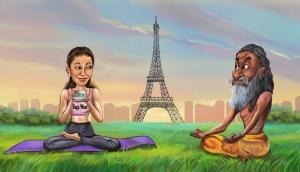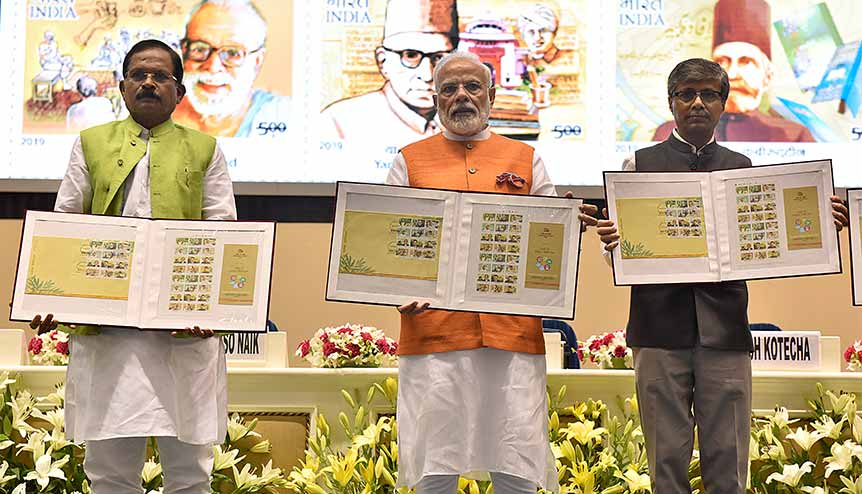
The millennia-old Indian Ayurveda system offers a unique approach to healthcare. Today, it’s become synonymous with alternative healing from California to Kerala – and the Covid-19 outbreak has given it a renewed burst of life.
“India is the cradle of the human race, the birthplace of human speech, the mother of history, the grandmother of legend and the great-grandmother of tradition.” – Mark Twain
The knowledge of long life.
That’s one of India’s first and most enduring gifts to humanity.

Ironically, the Covid-19 outbreak has given it a renewed burst of life.
With the world struggling to battle the pandemic, it’s hardly a surprise that Ayurveda would emerge as one of the tools to be deployed in the fight against the dreaded virus. The Indian government announced early during the advent of the pandemic that unique clinical drug trials had been initiated to evaluate the safe and effective use of selected Ayurvedic medicines in the prophylaxis and treatment of Covid-19 – becoming possibly the first of its kind experiment where modern physicians are engaged alongside traditional Ayurvedic healers to manage the infection. The trial follows a public advisory on the use of several well-known Ayurveda formulations to improve the immune system and health in the fight against the pandemic, given that neither any medicine nor any vaccine is available for the disease.

Prime Minister Narendra Modi with Minister of State Shripad Yesso (L) and AYUSH Secretary Rajesh Kotecha (R) release commemorative postage stamps of master healers. The government has set up numerous Ayurveda networks across the country.
Of course, the fact that Ayurveda is finally able to find its own pedestal among dozens of divergent pathways in the war against Coronavirus has been largely possible thanks to the due recognition given to the tradition by the Narendra Modi government.
The Ministry of AYUSH (Ayurveda, Unani, Siddha and Homeopathy) was formed in 2014 soon after Modi came to power, and it set up a network of operations involving to oversee more than half a million Ayurveda physicians, 256 Ayurvedic medical colleges, 2,400 Ayurveda hospitals and several hundred Ayurveda pharmacies across India.
The institute – India’s premier Yoga and Ayurveda research agency has been able to “unravel the secrets of Yoga from ancient texts and offer it to society through an evidence-based approach,” he says.
He should know – for Dr Nagendra is also the yoga guru to Prime Minister Modi.
Thanks to the renewed attention on India’s ancient but potent traditions in the past 6 years, yoga and Ayurveda have emerged as the greatest sources of soft power of India. The S-VYASA institute attracts scores of foreigners to its sprawling campus every year and has set up branches in more than 30 countries.
Along with political goodwill, the increased focus on Ayurveda and the traditional Indian way of life and healing is also the result of an “increasing reliance on organic and herbal treatment procedures with the belief of having no or less side effects,” says a global report on Ayurveda trends conducted by Market Research Future. The report found that the global Ayurveda market is poised for a huge leap by 2023 – and that assessment was done before the pandemic started.
Students of the PNNM Ayurveda Medical College at an ayurvedic retreat in Kerala. Ayurveda is witnessing massive awareness and growth in Western markets.
What is fuelling the growth of the global Ayurveda market?
Dividing the market into four major regions, the report expectedly found that the Asia Pacific region commands the lion’s share, led by India: “The rich tradition of herbal medicines and large-scale export of Ayurveda drugs from India to various regions in the world are majorly aiding the growth of the Ayurveda market in this region.”
The Ayurveda market also continues to flourish in the Middle East and Africa, mainly due to the availability of herbal medicines that provide cost advantages over synthetic drugs.
“Indian sciences can solve modern problems because they recognize the difference between the gross physical level (Sthula), and the more subtle (Sukshma), levels,” said Professor Alex Hankey, a British theoretical physicist trained at the Massachusetts Institute of Technology and Cambridge University, who is currently a research fellow at S-VYASA. “Western sciences have almost no idea of the existence of the latter, and tend to deny evidence for it when data indicating their existence is brought up. The power of the Sukshma levels can explain all the great results reported in ancient Indian sciences.”
An Afghan woman is treated by ayurvedic physician Daya Singh Ajaan in Kabul. Ayurveda has attained a global popularity today.
The global popularity of and fascination with Ayurveda and yoga is perhaps lost on generations of Indians who fondly recall growing up on these and other practices as a typical way of life, shorn of the global glamour that they attract today. Indeed, an average Indian household in the pre-globalisation era of the 1970s and 1980s would be all too familiar with practicing yoga as a part of daily exercise regimen and eating organic food and even corn-fed chicken (basically stuff sold in the market without pesticides and other harmful chemicals).
But what India took for granted for decades has now shaken up the world.
“Yoga and Ayurveda are the two greatest gifts of India to humanity, to planet earth. The health of a human being depends on the health of our planet earth… A human being’s health is not just for the body – it includes the body, mind and feelings. All of our being should be treated, to be in good health. Ayurveda and Yoga have made people become more and more aware of this,” said Guru Kiran Vyas, who runs France’s biggest Ayurvedic centre in Normandy and was the first person to introduce Yoga at UNESCO.
Ayurvedic medicine ingredients on sale in India. Ayurveda is everywhere and belongs to everyone.
Though it has been around for more than 3,000 years, the roaring success of Ayurveda today is a far cry from the difficult days of early 19th century.
In 1835, the teaching of Ayurveda was suspended in the Calcutta Medical College in eastern India by the British, although India’s national uprising for independence and social reforms infused a new strength in the traditional medical system.
The magnitude of the West’s wariness of Ayurveda from its nascent stage can be gauged from isolated incidents from history. In 1911, Henry Wellcome, the medical entrepreneur who founded the Wellcome Collection, sent Paira Mall, a doctor and linguist, to scour India for diagrams and manuscripts that would reveal “the art and science of healing through the ages”. Wellcome sent Mall with express instructions not to return until “India is completely ransacked as far as we possibly can for literature and other objects of interest connected with ancient medicine”.
Contrast that approach with the reality today – where Ayurveda is everywhere and belongs to everyone. “Every time I talked to different people from different communities, religions and parts of the world, they would have a different viewpoint on who owns Ayurveda and where the knowledge came from,” Bárbara Rodríguez Muñoz, curator of an exhibition titled “Ayurvedic Man: Encounters with Indian Medicine,” in London, told the Financial Times.
Herbal medicine manufactured by The Himalaya Drug Company in India are distributed by Vedic Medical Hall Ltd, London. The Indian government has supported the surge in demand by lowering the GST.
In the quest to adopt India’s ancient science, Russia has emerged as the second-largest Ayurveda market followed by the USA. In Europe, France, Germany, and the UK accounts for the top three markets due to growing demand for natural therapies and remedies, while Kazakhstan, the UAE, Ukraine, Japan, the Philippines and Kenya round off the other big markets.
The government has also incentivised the industry by lowering the goods and service tax (GST) on Ayurveda products to only 5% to encourage the sector, while the system has been found to alleviate chronic diseases such as rheumatic disorders, cardiology and various forms of allergies.
India’s mission of spreading ancient systems of wellness to the farthest corners of Earth, is therefore alive and well.
UK Ministers, Shadow Cabinet leaders, diplomats, business chiefs come together for India Global Forum’s grand Diwali Reception in London Read… Read More
At the India Global Forum’s (IGF) grand Diwali reception in London this week, UK Home Secretary Suella Braverman focussed her message of… Read More
Home Secretary Suella Braverman has said the UK is eager to secure a trade deal with India to boost both… Read More
Chandrasekhar also attended a session on the Future of Digital at the India Global Forum where he spoke on the… Read More
India Global Forum’s glittering awards ceremony with Guest of Honour, UK Chancellor Rishi Sunak, to mark the culmination of a… Read More
The UK government on Wednesday announced 75 fully-funded scholarships for Indian students to study in the UK, beginning September 2022,… Read More
View Comments